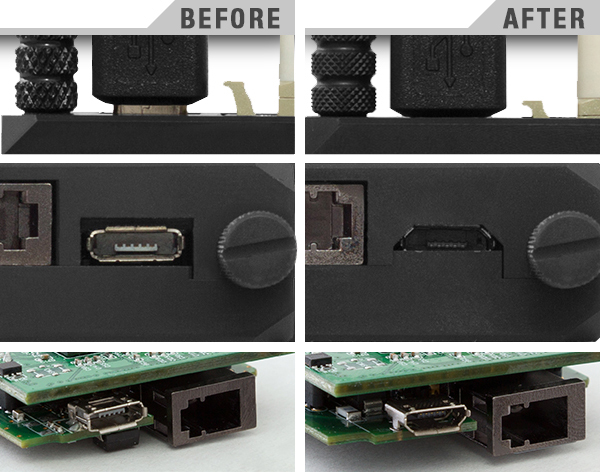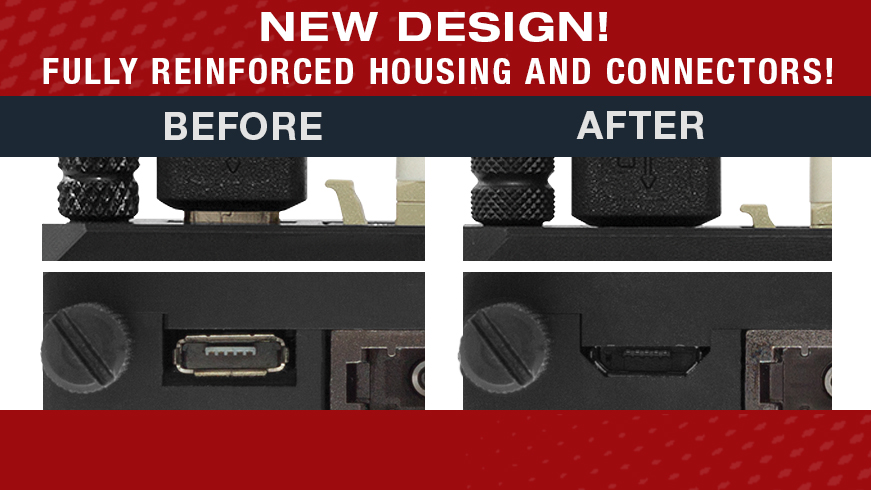The development of the devices, however, does not stop at the point when they become available on the market, but we aim to further improve all products based on the feedback our support team continuously receives from users.
In this story we would like to present an example for you of how the process of customer feedback and the given response develops to eventually produce a much improved product.
Most of you must already be familiar with the popular, plug shaped, small size Lightware optical extenders:
We started receiving support requests because the devices’ micro USB port were too easy to break. Originally these devices came with the AB type micro USB, which does not reflect the shape of the fitting micro USB plug and as a result it was not very hard to insert the plug upside-down and break the internal plastic middle of the port. The connector was applied to the PCB by a third party company which managed to change the connectors to a Micro-B type, which is shaped as the plug, so it was impossible anymore to insert it the wrong way.
We were almost happy, but the second wave of trouble started flowing in: users kept breaking the connectors off the PCB when they plugged the USB cable. As it turned out, the new, rightly shaped connectors were only soldered to the PCB at two points, not at four as they had been previously. These two points proved to be insufficient to withstand the mechanical forces which may occur on the field.
So we instructed the third-party maker to use connectors which are attached to the PCB using thru-holes, so that the connectors’ grip on the PCB become reinforced.
As by that time we had had too many complaints (especially considering Lightware’s high self-imposed reliability and quality standards), we continued to further strengthen the unit. We knew that some usage areas (e.g. rental) mean working in the dark where the correct plug orientation cannot be easily determined, so people still might attempt and succeed to insert the plug upside-down, which is hard to do, but still possible.
Our product design team redesigned the unit housing, made the hole around the Micro-B USB port follow the shape of the connector, and increased the thickness of the plastic housing, to avoid the plug to be pushed deeper into the connector than necessary.

As an outcome, now we have a thoroughly reinforced device, with the connector soldered through the PCB, the shape of the connector and the housing around it corrected, all this making it impossible to have further incidents caused by the incorrect insertion of the plug. At least we hope so very much.
As this story tells, sometimes problems can even arise from seemingly minor construction faults. There is no flawless design, but at Lightware we always work on trying to get closer to perfection. In this process we cannot neglect the help of the people who actually use our products: you. We thank you for this.



